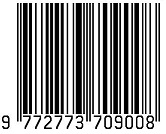Extraction and Characterization of Natural Food Colorants from Canistel Fruit (Pouteria campechiana): A Comprehensive Evaluation of Physicochemical Properties
DOI:
https://doi.org/10.31357/ait.v5i01.8405Keywords:
canistel fruit, carotenoid, encapsulation, natural food colorantAbstract
A food colorant is a food additive that can be any kind of dye, pigment, or substance applied to foods. As artificial food colorants impart health hazards, this research aims to extract carotenoids from Canistel fruits (Pouteria campechiana) as a natural food colorant substitute for artificial food colorants. Carotenoid extraction was done using the solvent extraction method using a hexane, acetone, and ethanol (70%:15%:15) ratio. The instability of the carotenoid is one of the main drawbacks, and microencapsulation techniques have been used to overcome this. 10% MD, 5% MD + 5% GA mixture, and 10% GA were tested as the wall material treatments in the encapsulation process. Encapsulation with 10% MD showed an 11.91±0.29 g higher yield and higher total carotenoid content after spray drying, while 10% MD retained 45.64±5.3% more carotenoid concentration. The color Chroma meter values in three treatments were observed. When considering b* values, the highest yellowness and overall best color measurements were reported by the 10% MD treatment. The 2, 2-diphenyl-2-picrylhydrazyl (DPPH) assay method was used to find antioxidant activity. The highest antioxidant activity indicated the lowest IC50 value as recorded as 3.57±0.04 mg/mL, 4.38±0.20 mg/mL, and 5.19±0.24 mg/mL from the 10% MD, (5% MD + 5% GA) mixture, and 10% GA, respectively. Results revealed that the spray drying technique auspiciously encapsulated the carotenoids.
Downloads
Published
How to Cite
License
Copyright (c) 2025 R.A.D.A. Ranasinghe, S.M.A.C.U. Senarathne, W.A.J.P. Wijesinghe

This work is licensed under a Creative Commons Attribution-NonCommercial-NoDerivatives 4.0 International License.
The Authors hold the copyright of their manuscripts, and all articles are circulated under the terms of the Creative Commons Attribution License, which permits unrestricted use, distribution, and reproduction in any medium, as long as that the original work is properly cited.
The use of general descriptive names, trade names, trademarks, and so forth in this publication, even if not specifically identified, does not imply that these names are not protected by the relevant laws and regulations. The authors are responsible for securing any permissions needed for the reuse of copyrighted materials included in the manuscript.




